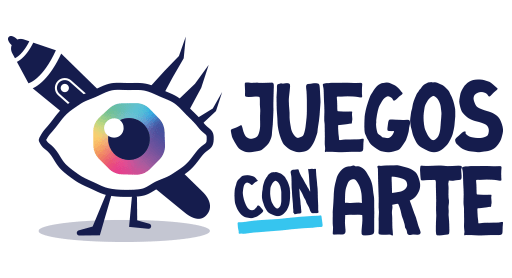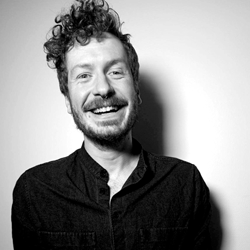
Recientemente jugamos al juego de mesa BEAST, editado en castellano por nuestros amigos de Bumble3ee Interactive. Mientras jugábamos, nos quedamos prendados de su sombrío y misterioso arte, cuando supimos que fueron realizadas por Aron Midhall (uno de sus autores) nos pusimos en contacto con él para que nos contase más sobre su trabajo y creación.
Os dejamos con la entrevista, no olvidéis compartir la entrevista si te ha gustado 😉.
ENG | Welcome Aron Midhall, it’s a pleasure to talk to you, for our readers who don’t know you yet, could you introduce yourself to our community and tell us how Studio Midhall came about?
Hellooo! I’m one of the creators and founders of Beast and Studio Midhall, and the artist for the game. I think it all started around 6 years ago. At that time, me and my brother Elon lived at opposite sides of Sweden. Independently from each other, we had both begun sketching two different board game ideas. He wanted to do something with cards, and my mind was set on dark and spooky forests.
When we both moved to the same city, we kind of brute forced our ideas together and just worked on it for the fun of it, and as a way to reconnect after living apart for so long.
I think the point where it became “Beast” was after Elon loudly exclaimed that he wanted to make a big frog, and we just took it from there. A few years in when Assar also joined the process, the game really took off and it felt that we truly had something special on our hands.
ESP | Bienvenido Aron Midhall, es un placer hablar contigo, para nuestros lectores que aún no te conocen, ¿podrías presentarte a nuestra comunidad y contarnos cómo surgió Studio Midhall?
¡Holaaa! Soy uno de los creadores y fundadores de Beast y Studio Midhall, y el artista del juego. Creo que todo empezó hace unos 6 años. Por aquel entonces, mi hermano Elon y yo vivíamos en puntos opuestos de Suecia. Independientemente el uno del otro, ambos habíamos empezado a esbozar dos ideas diferentes de juegos de mesa. Él quería hacer algo con cartas, y yo pensaba en bosques oscuros y espeluznantes.
Cuando ambos nos mudamos a la misma ciudad, juntamos nuestras ideas y trabajamos en ellas por pura diversión y como una forma de reconectar después de vivir separados durante tanto tiempo.
Creo que el punto en el que se convirtió en «Beast» fue cuando Elon exclamó en voz alta que quería hacer una rana grande, y a partir de ahí nos pusimos manos a la obra. Unos años después, cuando Assar también se unió al proceso, el juego despegó de verdad y tuvimos la sensación de tener entre manos algo realmente especial.

ENG | You introduce yourselves in the world of board games with BEAST, a one vs. all game in which a player controls a BEAST that wants to defend itself from invading humans and hunters controlled by the other players. What can you tell us about the project and its mechanics?
Beast is a hidden movement game in which one player plays against everyone else at the table. That player moves around the map in secret, and tries to hide from the other players until it finds a moment to strike. But whenever the Beast attacks, and it must feed in order to grow stronger and eventually win the game, it reveals it’s position. That means that the hunters are always close on its trail, and makes for a really intense experience.
Beast is also only a hidden movement game in half. The other half is a tightly packed action system, in which all your actions are bound by the cards you have in your hand. If you want to win, you have to make your cards count. Cooperate with your fellow hunters, discuss and make the most of your cards together. Or as the Beast, play them at the perfect moment, when you know you can snatch that kill and hopefully get away without retaliation.
Those cards are also (and this is by far my favorite part of the game) drafted between all players. The poor hunter who sits next to the Beast has to pass cards he or she knows the Beast really, really wants. It’s pure anxiety but in a fun way!
ESP | Os presentaís en el mundo de los juegos de mesa con BEAST, un juego de uno contra todos en el que un jugador controla a una BESTIA que quiere defenderse de los humanos invasores y de los cazadores controlados por los otros jugadores. ¿Qué puedes contarnos sobre el proyecto y su mecánica?
Beast es un juego de movimiento oculto en el que un jugador juega contra todos los demás en la mesa. Ese jugador (Bestia) se mueve por el mapa en secreto, e intenta esconderse de los demás jugadores hasta que encuentra el momento de atacar. Pero cada vez que la Bestia ataca, y debe alimentarse para hacerse más fuerte y acabar ganando la partida, revela su posición. Eso significa que los cazadores están siempre cerca de ella, y hace que la experiencia sea realmente intensa.
Además, Beast es sólo la mitad de un juego de movimiento oculto. La otra mitad es un apretado sistema de acción, en el que todas tus acciones están ligadas a las cartas que tienes en la mano. Si quieres ganar, tienes que hacer que tus cartas sirvan. Coopera con tus compañeros de caza, discutid y sacad el máximo partido a vuestras cartas juntos. O, como la Bestia, jugarlas en el momento perfecto, cuando sabes que puedes arrebatar esa presa y, con suerte, escapar sin represalias.
Esas cartas también (y esta es con diferencia mi parte favorita del juego) se draftean entre todos los jugadores. El pobre cazador que se sienta al lado de la Bestia tiene que pasar cartas que sabe que la Bestia realmente quiere. Es pura ansiedad, ¡pero de una forma divertida!
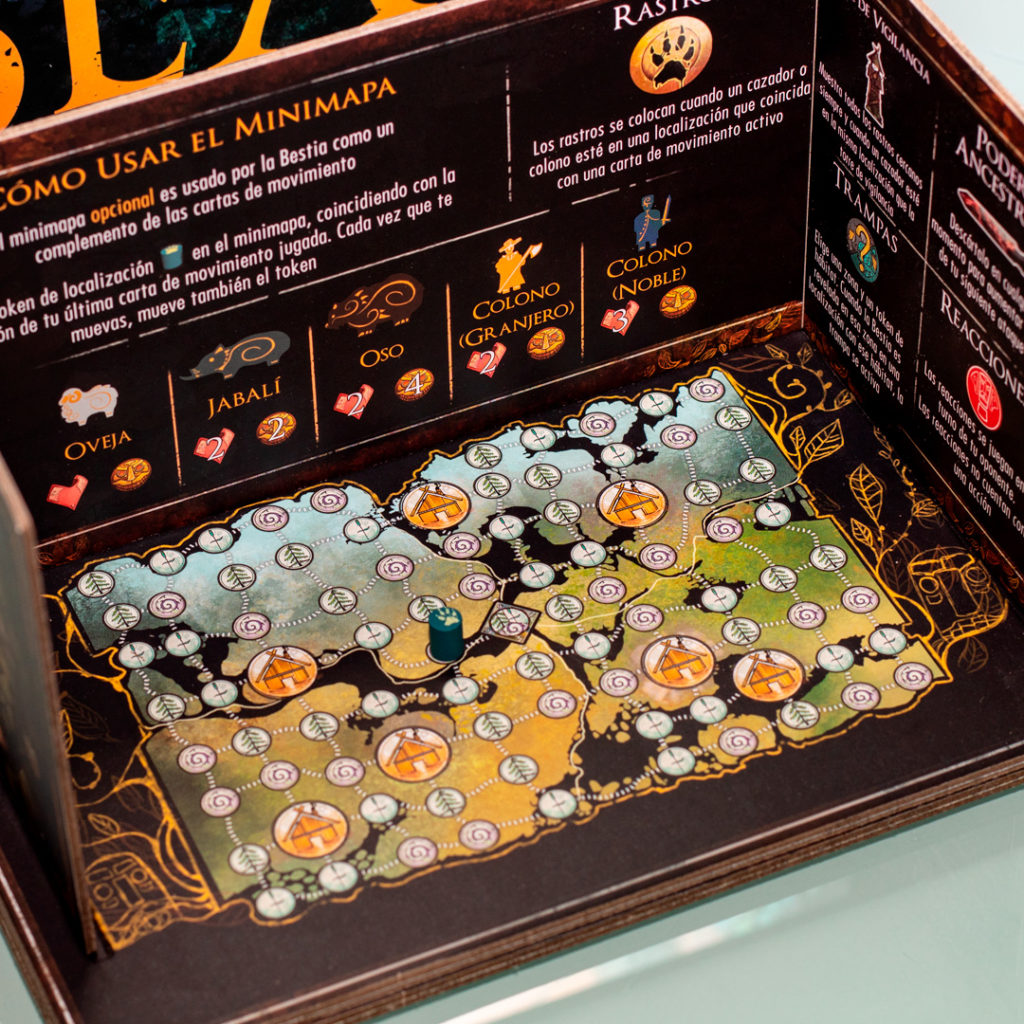
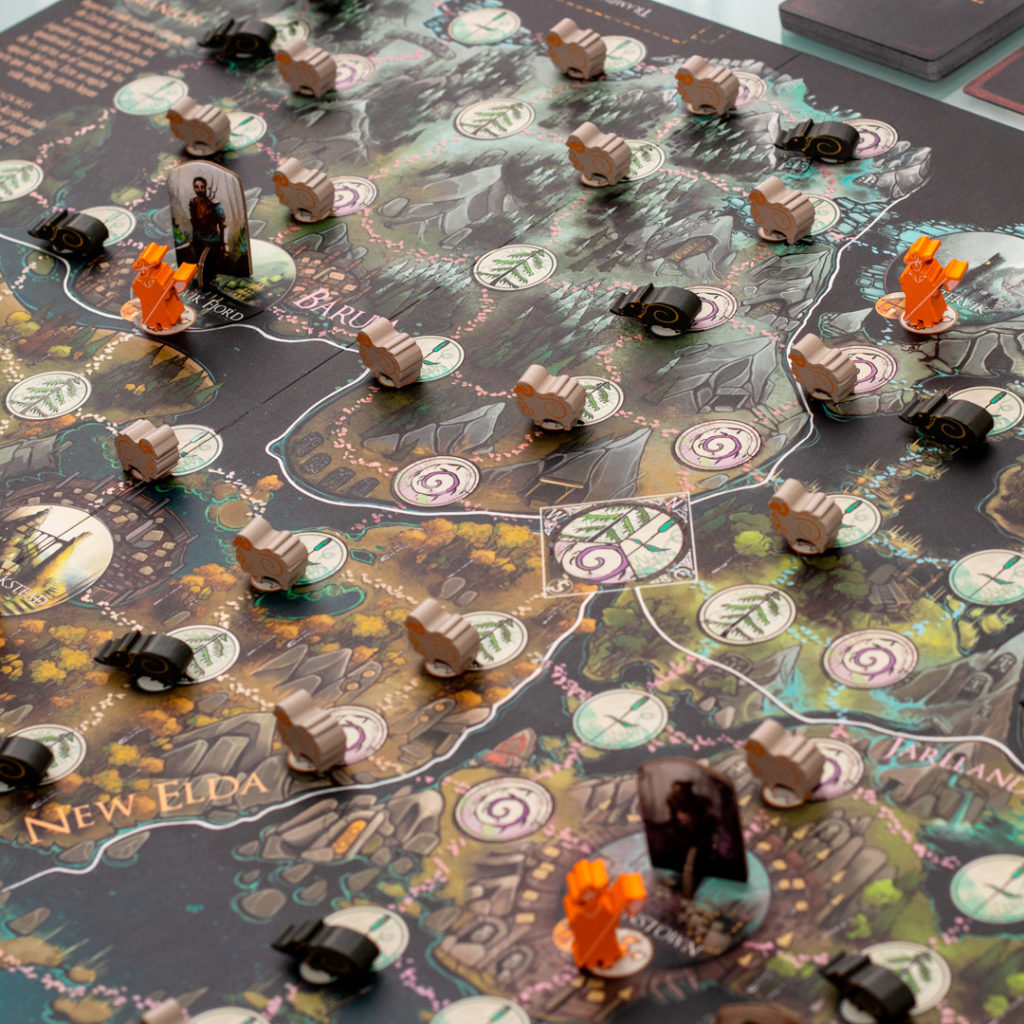
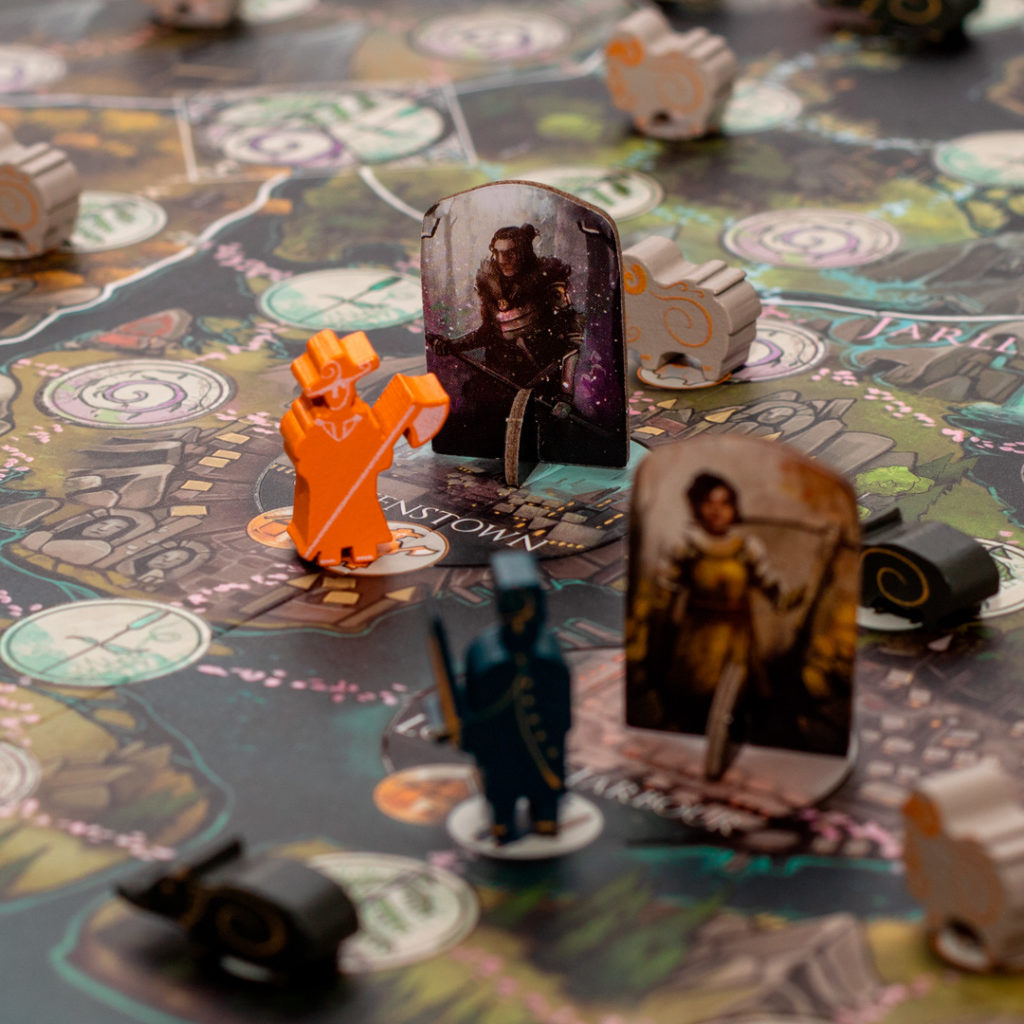
ENG | What came first, the mechanics or the theme?
This is a hard one, I think I wanted godlike animals and humans being invaders and exploiters of nature pretty early in the development. But if I remember correctly, we were also a little tired of many cooperative games out there, in which one player can dictate the game and basically tell everyone else what to do. So we wanted to avoid that, and our solution was to put the player who knows the game best against everyone else, and form the gameplay around trying to accurately guess where the Beast is with mind games, and strategic gameplay that requires a lot of teamwork and discussion.
ESP | ¿Qué fue primero, la mecánica o la temática?
Esta es una pregunta difícil, creo que quería animales divinos y humanos invasores y explotadores de la naturaleza desde el principio del desarrollo. Pero si no recuerdo mal, también estábamos un poco cansados de muchos juegos cooperativos que hay por ahí, en los que un jugador puede dictar el juego y básicamente decirle a los demás lo que tienen que hacer. Así que queríamos evitar eso, y nuestra solución fue poner al jugador que mejor conoce el juego contra todos los demás, y formar el juego en torno a tratar de adivinar con precisión dónde está la Bestia con juegos mentales, y un juego estratégico que requiere mucho trabajo en equipo y discusión.
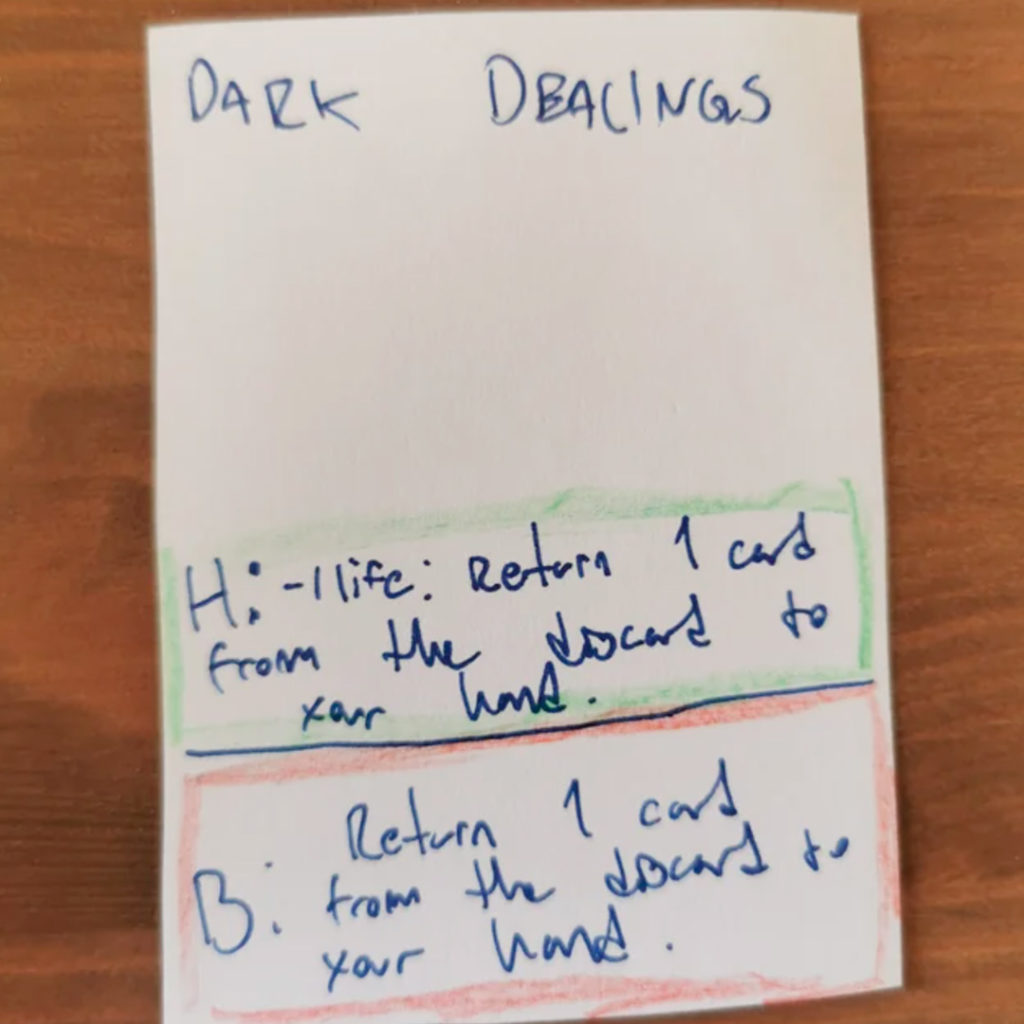
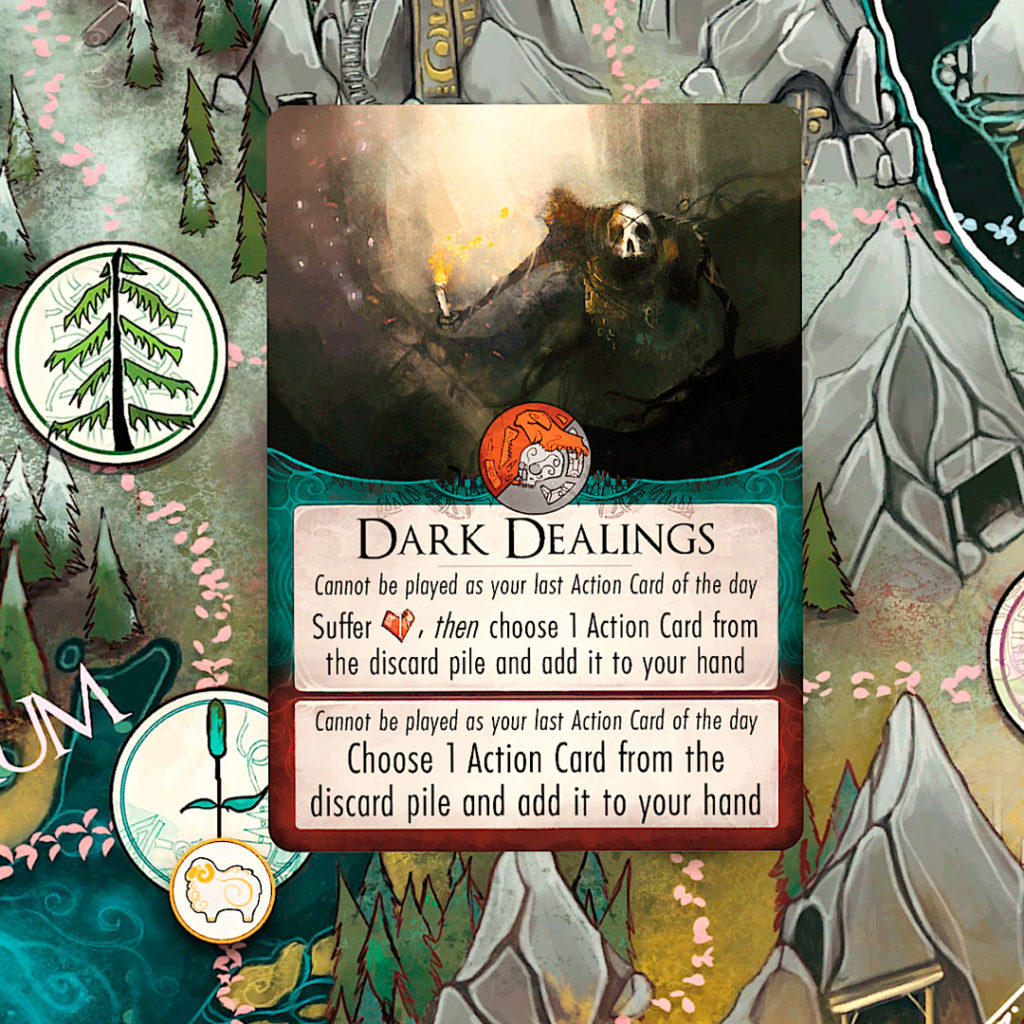
ENG | As an author and illustrator you have been able to participate in the whole process, how was the creative process and development?
I’m a traditional artist by heart, so I basically learned how to paint digitally for Beast. The first sketches were horrible and will never see the light of day! For me, the creative process was mind-blowingly fun. We got to create our own little world, and each new artwork, place, and character added expanded our world.
ESP | Como autor e ilustrador has podido participar en todo el proceso, ¿cómo ha sido el proceso creativo y el desarrollo?
Soy un artista tradicional de corazón, así que básicamente aprendí a pintar digitalmente para Beast. Los primeros bocetos eran horribles y nunca verán la luz. Para mí, el proceso creativo fue alucinantemente divertido. Conseguimos crear nuestro propio pequeño mundo, y cada nueva obra de arte, lugar y personaje añadido ampliaba nuestro mundo.
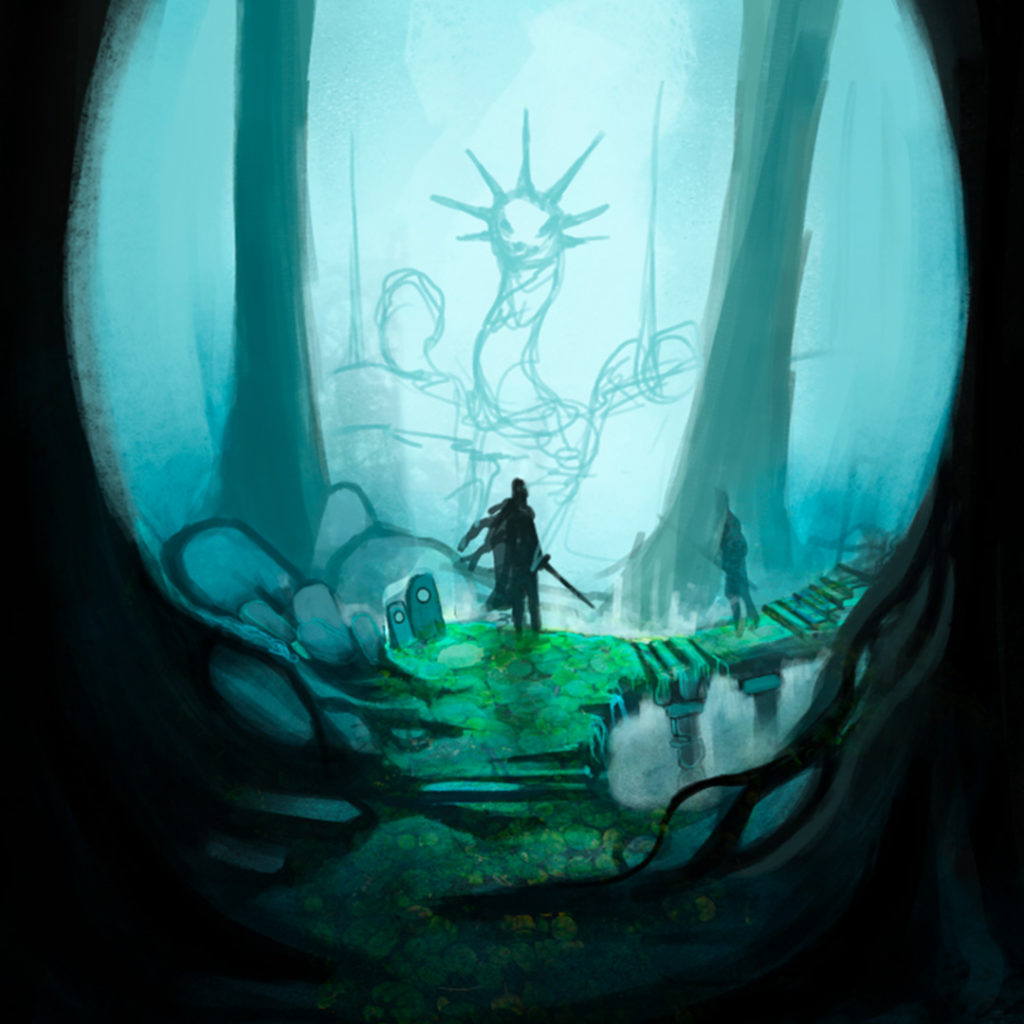
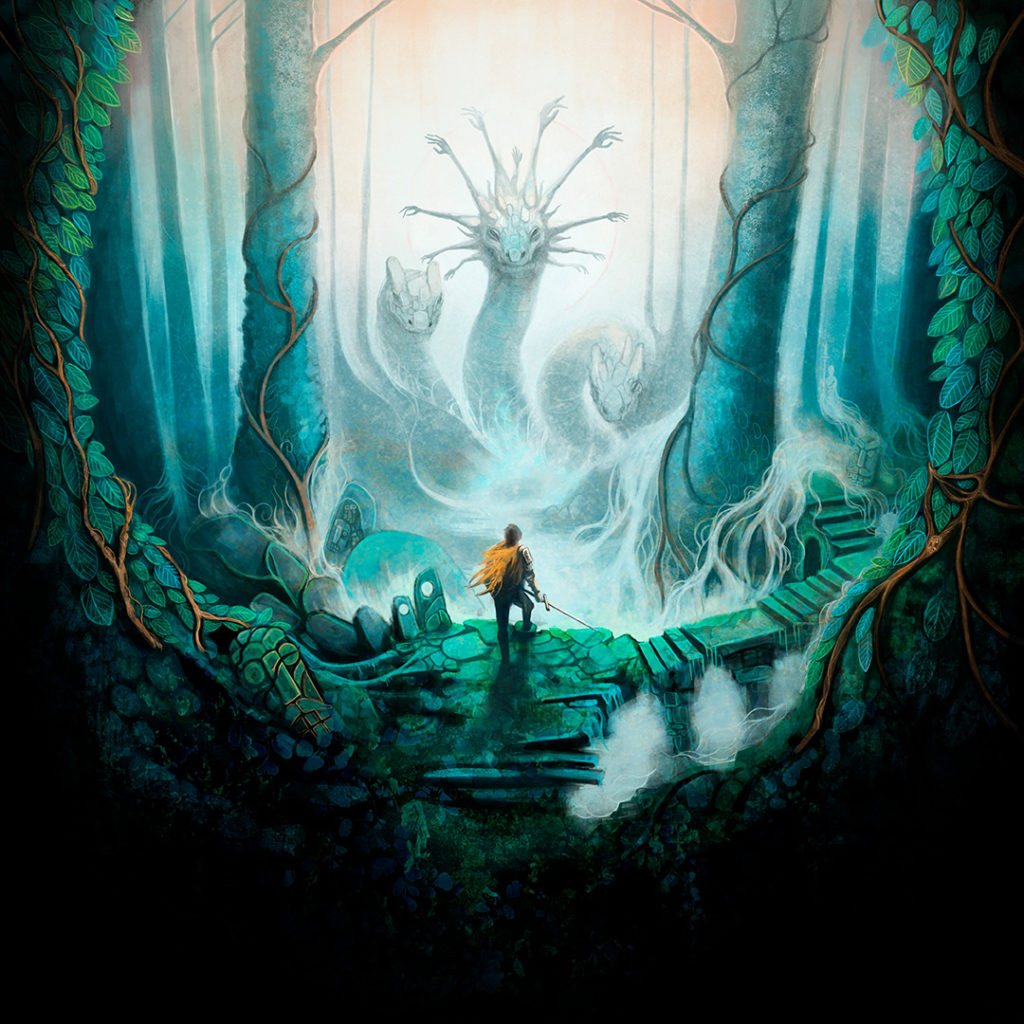
ENG | In BEAST we can appreciate a somber style, with cold colors that are broken with complementary warm colors for the highlighted areas. What did you want to convey with it?
That is a really good question! I really like stark contrasts combined with a little more somber or fewer colors. The white mist in the background just barely lets you see the silhouette of the trees and creatures that hides within it, and the foreground and sides are really dark to make the art feel like it has a lot of depth. I try to work with a few select colors for each picture and have them complement each other. Color is so important for the game. Both the art and the many different design elements have to be easy to read and understand, and I really like the idea of a dark and scary world that at the same time is very colorful in the right places.
ESP | En BEAST podemos apreciar un estilo sombrío, con colores fríos que se rompen con colores cálidos complementarios para las zonas destacadas. ¿Qué querías transmitir con ello?
Muy buena pregunta. Me gustan mucho los contrastes marcados combinados con colores un poco más sombríos o menos intensos. La niebla blanca del fondo apenas deja ver la silueta de los árboles y las criaturas que se esconden en ella, y el primer plano y los laterales son realmente oscuros para que el arte parezca tener mucha profundidad. Intento trabajar con unos pocos colores seleccionados para cada imagen y que se complementen entre sí. El color es muy importante para el juego. Tanto el arte como los diferentes elementos de diseño tienen que ser fáciles de leer y entender, y me gusta mucho la idea de un mundo oscuro y tenebroso que al mismo tiempo sea muy colorido en los lugares adecuados.
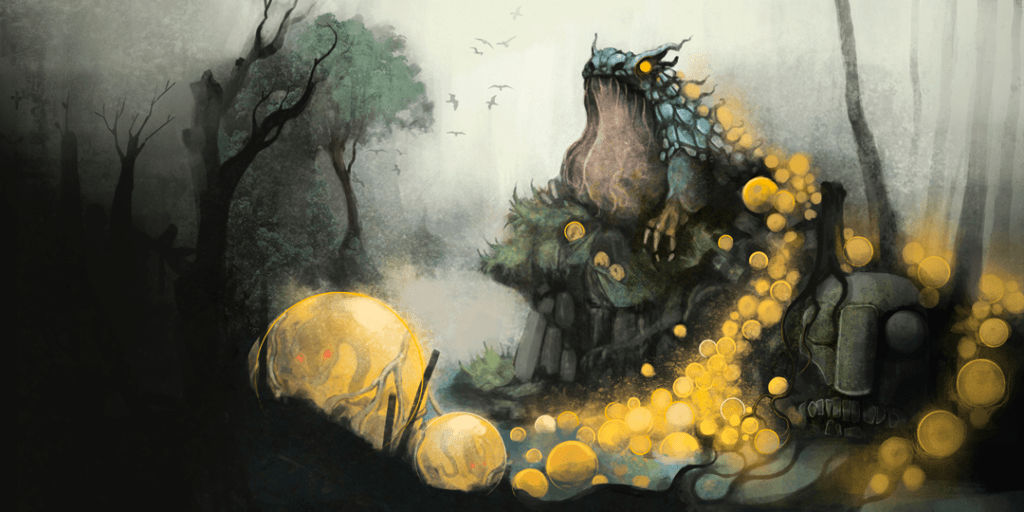
ENG | In the game we will get into the skin of different creatures. How was the documentation process to create each beast?
So much fun! As I said before if my brother had never blurted out “I want to make a frog”, Beast wouldn’t be Beast at all. From a gameplay perspective, we really just wanted to riff and play on each other’s ideas, and the Beasts for the most part being giant, godlike animals really helped with that and what they could do. Like transforming the various different traits of an animal into cards that work in the game.
From an art and lore perspective, this was mostly me painting away, trying out different things until it “felt right”. We read quite a bit of folklore and mythology and discussed what the creatures were and what their place in the Beast world was as we created them.
ESP | En el juego nos meteremos en la piel de diferentes criaturas. ¿Cómo fue el proceso de documentación para crear cada bestia?
Muy divertido. Como he dicho antes, si mi hermano no hubiera soltado «quiero hacer una rana», Beast no sería Beast en absoluto. Desde el punto de vista de la jugabilidad, lo que realmente queríamos era improvisar y jugar con las ideas de los demás, y el hecho de que las bestias fueran en su mayoría animales gigantes y divinos nos ayudó mucho con eso y con lo que podían hacer. Como transformar los distintos rasgos de un animal en cartas que funcionen en el juego.
Desde el punto de vista del arte y la tradición, me dediqué sobre todo a pintar, probando diferentes cosas hasta que «me sentí bien». Leímos bastante folclore y mitología y discutimos qué eran las criaturas y cuál era su lugar en el mundo de la Bestia mientras las creábamos.
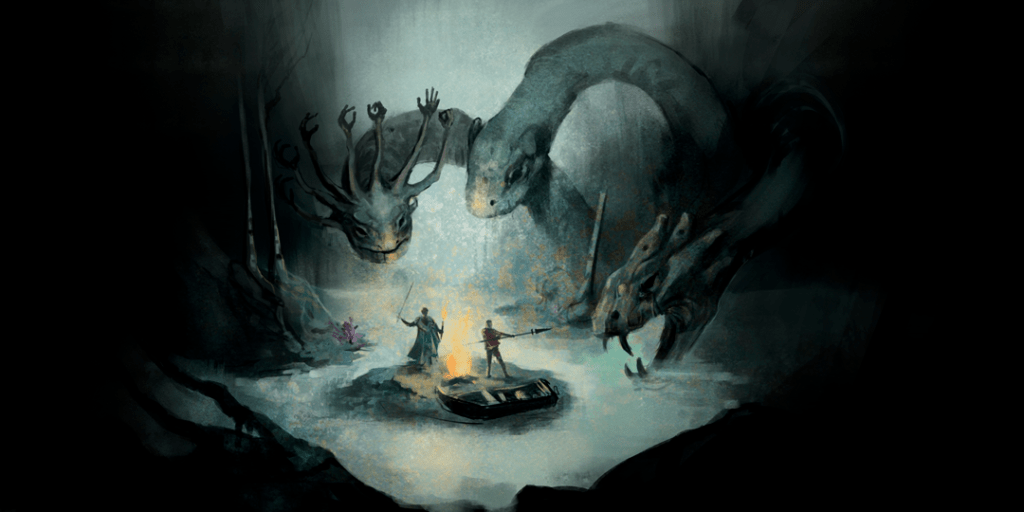
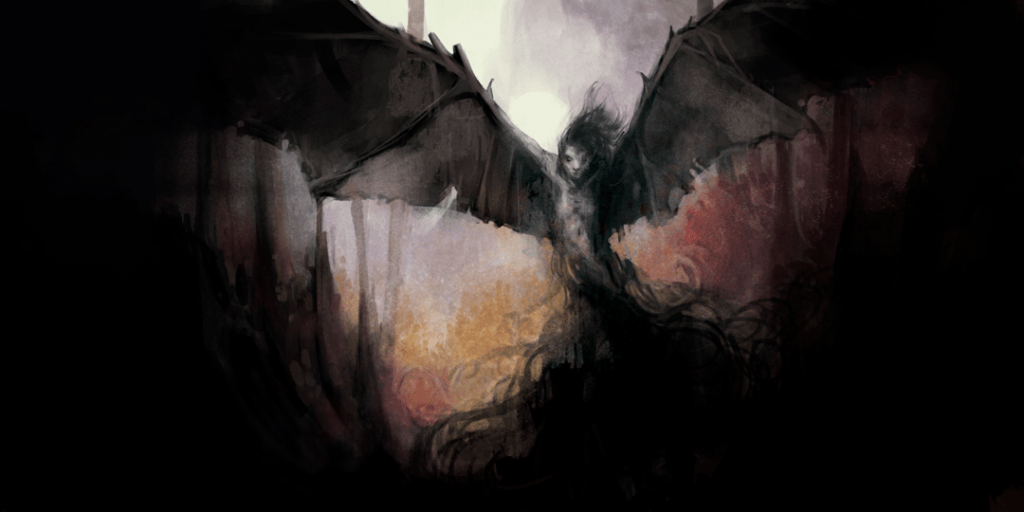
ENG | Of all the creatures you had to create for BEAST, which one was the most complicated and which one did you enjoy the most, why?
The one I enjoyed the most was probably Raaga, the giant three-headed snake. It was done pretty early, and was a very important piece for me. It solidified the world and how I wanted it to feel. And it’s so much fun painting monsters with hands or human features in all the wrong places, like the hands and arms reaching out from the main snake head!
The most complicated one was probably the batlike Beast Mara. It took many different iterations and she never turned out the way I wanted. I’m very happy with her final look, but it took a lot of time, a lot of coffee, and a lot of tears until it settled into something I liked.
ESP | De todas las criaturas que tuviste que crear para BEAST, ¿cuál fue la más complicada y con cuál disfrutaste más, por qué?
La que más me gustó fue Raaga, la serpiente gigante de tres cabezas. Lo hice muy pronto y fue una pieza muy importante para mí. Solidificó el mundo y cómo quería que se sintiera. Y es muy divertido pintar monstruos con manos o rasgos humanos en lugares equivocados, como las manos y los brazos que salen de la cabeza principal de la serpiente.
El más complicado fue probablemente la bestia murciélago Mara. Hicieron falta muchas repeticiones y nunca quedó como yo quería. Estoy muy contento con su aspecto final, pero me llevó mucho tiempo, mucho café y muchas lágrimas hasta que quedó algo que me gustó.
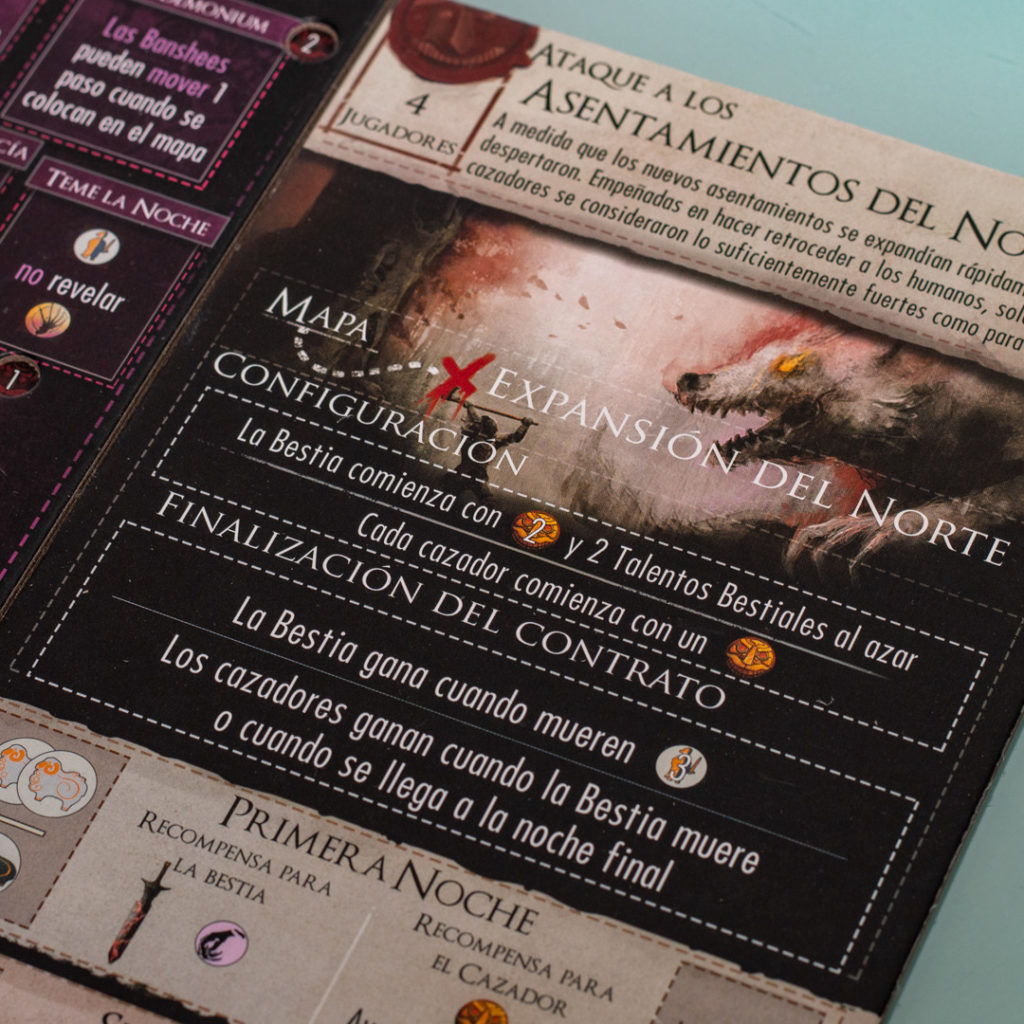
ENG | During the prototyping and development phases, which parts were the most complex and how did you solve them?
Getting the game to end! We used to host these big playtest sessions with friends, and to our surprise, the games never ended. The Beast would be too afraid to attack and reveal itself, and it led to these very passive gameplay loops. To fix that, we added so called contracts to the game. Basically scenarios guide the players with small side-quests and rewards for each round of the game. The mini-goals tie in into the gameplay loop really well, and lets both teams know what they want to do in order to win. They also added a set time length for the game, which meant that the Beast no longer could hide forever but instead was forced into more aggression and exciting action. You can even play and share community-created contracts on a website Assar built, at contracts.studiomidhall.com
ESP | Durante las fases de prototipado y desarrollo, ¿qué partes fueron las más complejas y cómo las resolviste?
Conseguir que el juego terminara. Solíamos organizar esas grandes sesiones de playtest con amigos y, para nuestra sorpresa, las partidas nunca terminaban. La Bestia tenía demasiado miedo de atacar y revelarse, lo que provocaba bucles de juego muy pasivos. Para solucionarlo, añadimos los llamados contratos al juego. Básicamente, los escenarios guían a los jugadores con pequeñas misiones secundarias y recompensas para cada ronda del juego. Los miniobjetivos se integran muy bien en el bucle de juego y permiten a ambos equipos saber lo que tienen que hacer para ganar. También han añadido una duración determinada para el juego, lo que significa que la Bestia ya no puede esconderse para siempre, sino que se ve obligada a una acción más agresiva y emocionante. Incluso se puede jugar y compartir contratos creados por la comunidad en un sitio web construido por Assar, en contracts.studiomidhall.com
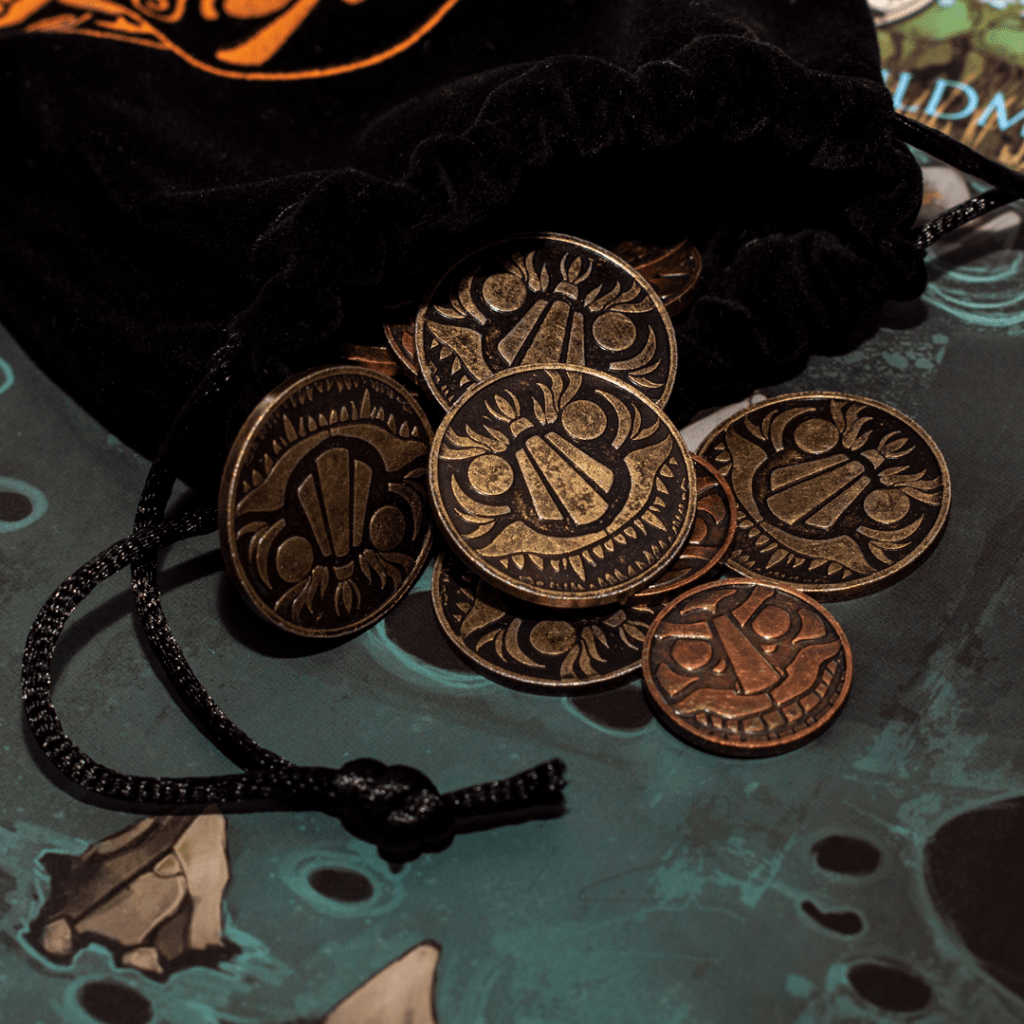
ENG | After the successful Kickstarter campaign and seeing the success of the game in other countries, what lessons have you learned from your experience in creating and promoting the game?
So, so many lessons. Too many lessons! We knew so little about either logistics and actually running a business when we started out, so many lessons were learned there. I think we’ve become a lot more structured moving forward. But maybe the most important lesson is just to test things right away. As soon as you have an idea for something you want to do, throw it against the wall and see if it works and is fun to play. The other biggest lesson is how amazing and supportive the community is. To be honest and open with everything that happens during the development and the fulfillment of the game.
ESP | Tras la exitosa campaña de Kickstarter y ver el éxito del juego en otros países, ¿qué lecciones has aprendido de tu experiencia en la creación y promoción del juego?
Muchísimas lecciones. Demasiadas. Sabíamos tan poco de logística y de cómo llevar un negocio cuando empezamos, que aprendimos muchas lecciones. Creo que ahora somos mucho más estructurados. Pero quizá la lección más importante sea que hay que probar las cosas enseguida. En cuanto tengas una idea de algo que quieras hacer, lánzala contra la pared y comprueba si funciona y si es divertido. La otra gran lección es lo increíble y solidaria que es la comunidad. Ser honesto y abierto con todo lo que ocurre durante el desarrollo y la realización del juego.
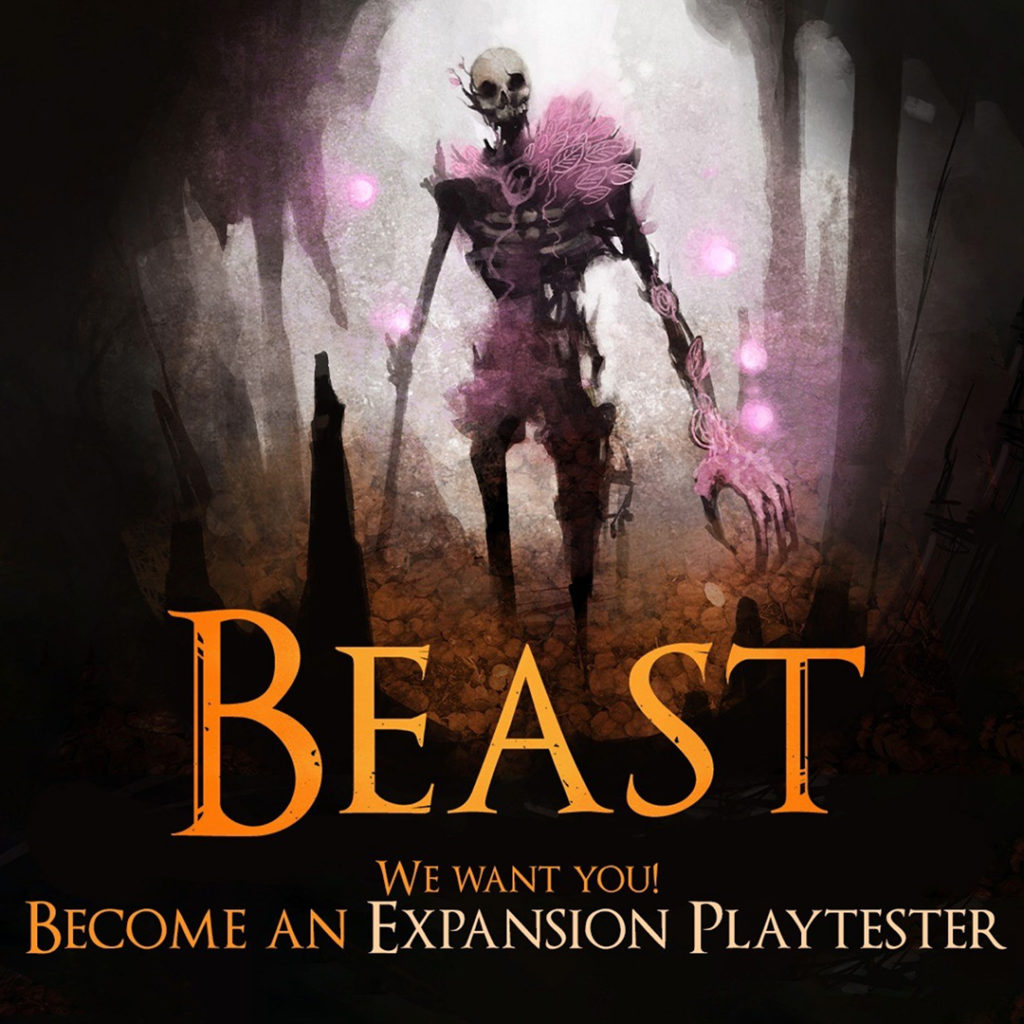
ENG | Finally, what projects are you currently working on and will we see your art in another board game soon?
We are currently hard at work with the first expansion for Beast! That is unfortunately all I can reveal right now, but it’s a lot of fun and pushes the game and its art in so many new and unexpected directions. This is maybe a little shameless self-promotion, but why not follow our journey forward? Beast is the game it is today much thanks to the wonderful community that stands behind it!
ESP | Por último, ¿en qué proyectos estás trabajando actualmente y veremos pronto tu arte en otro juego de mesa?
¡Actualmente estamos trabajando duro en la primera expansión de Beast! Por desgracia, es todo lo que puedo revelar ahora mismo, pero es muy divertido y lleva el juego y su arte en muchas direcciones nuevas e inesperadas. Quizá sea un poco de autopromoción desvergonzada, pero ¿por qué no seguir nuestro viaje? Beast es el juego que es gracias a la maravillosa comunidad que lo respalda.
Muchas gracias Aron 😉
Thank you for the interview!
(Todas las imágenes cedidas por Aron Midhall)

